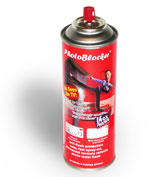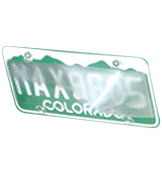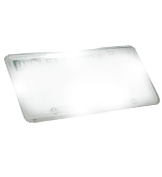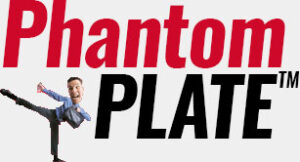Inside the District’s Red Lights
Red-light cameras are all over Washington–and coming to a city near you. The science behind them is bad and the are using them to make money, not save lives. It’s much worse than you thought. Part 1 in a series.
by Matt Labash
04/01/2002 12:00:00 AM
Editor’s Note: One of my colleagues jokes that the five deadliest words in journalism are “Part 1 in a series.” Well, not this time. This week we’ll be featuring Matt Labash’s investigate report on red light cameras and even though it’s a series, you won’t want to miss it.
-JVL
Part 1 – Part 2 – Part 3 – Part 4 – Part 5
|
OVER THE LAST DECADE, the Washington, D.C., Metropolitan Department has become a joke even sadder than the city’s man-eating potholes or crack-smoking mayors. Various reports have them losing seven percent of their cars, failing to close one-third of their homicide investigations, and towing legally parked cars, then failing to tell citizens the whereabouts of their vehicles. But according to the department’s propagandists, if D.C. residents have a “principal public safety” concern–a concern greater than arson, auto theft, robbery, sexual assault, and homicide, all of which have risen since 1999–it is safety. And if there is any safety concern that concerns D.C. residents most–more than, say, drunk driving–it is speeding and red-light running. And here, the citizens are in luck. Because the D.C. are on the case. Sort of. Actually, their automated enforcement technology is on the case.
To those not familiar with automated enforcement technology, give it time–you will be. Not only has this technology, used in Europe for decades, arrived in this country, but it is reaping millions of dollars in revenue for municipalities in the baldest cash grab by cities since they sued gun manufacturers for making guns that shoot people. As their respective names suggest, red-light cameras and photo radar are designed to photograph motorists who enter intersections after the light turns red or who speed above a certain threshold.
While systems vary according to municipality and contractor, motorists can expect to receive a photo of themselves committing the infraction, which is printed on a citation they receive in the mail. Fines range from $30 for driving up to 10 mph over the speed limit in the District, to $271 for running a red light in California. In some states, license points are assessed, making automated enforcement the gift that keeps on giving in the form of higher insurance premiums.
The cities, naturally, are wary of being called greedheads. In D.C., which has most enthusiastically embraced the technology, with its 39 red-light cameras and 6 photo radar units, champions like Chief Charles Ramsey have said, “It isn’t about revenue making. It’s about saving lives.” To prove it, the department’s website displays gauzy pictures of children. When anybody suggests otherwise, Ramsey quickly returns fire. After the Washington Times denounced the use of photo radar as a Gestapo tactic, Ramsey wrote a spleen-venting letter to the editor, informing the paper that he sensitizes his officers by taking them to the Holocaust Museum.
To measure Ramsey’s claim that the technology isn’t about generating revenue–despite the District’s collecting $15,569,721 in fines after two and a half years of red light camera use–I go on a ride-along, or rather, a sit-along, with D.C. . On a muggy August morning, during the sleepy off-time just after rush hour, I lounge in an unmarked Crown Victoria in Northeast D.C. with Sgt. James McCoy and Officer D.J. Cephas. The car is one of five mobile photo radar units currently sweeping the city, along with one stationary unmanned unit. While red-light cameras are unmanned, permanently posted like all-seeing birdhouses at intersections, photo radar can either be shuttled around in cars or stationed solo, without human supervision. (The District has promised their red-light cameras will also double as photo radar units, meaning motorists will eventually be dinged for clearing an intersection too fast, or for not clearing it fast enough.)
The space where the vehicle’s shotgun seat used to be is now occupied by a giant T-bar bolted to the floor, on which is mounted a Gatso Radar 24 camera control unit, a data memory card, and all manner of technical doodads. With all their Doppler radar talk, the officers sound like meteorologists with guns. But their car is not really a car in any conventional sense. “It doesn’t have any equipment,” explains McCoy, “no siren, no radio.”
In fact, these working cops aren’t technically working cops. They’re off-duty cops, getting paid overtime that is covered by the city’s camera contractor, Lockheed Martin IMS. At the time of my outing, Lockheed is responsible for maintaining the equipment, processing the data, and sending out the citations–which entitles them to $32.50 out of every $75 red-light-camera ticket and $29 of every photo-radar ticket. (Since then, Lockheed sold their national automated enforcement business to Affiliated Computer Services in Dallas, with the same profit arrangement applying.) Proponents of the system like to point out that the whole operation doesn’t cost taxpayers a dime. Cynics could contend that it’s cost taxpayers and commuters quite a few dimes. As of February 2002, D.C.’s red-light camera not only collected over $15 million since August of 1999, but its photo radar program, which has only been in operation for seven months, has already netted the District a cool $9,041,295.
Other than the missing seat and equipment, Sgt. McCoy finds that these cars “have all the amenities–the lumbar controls, a stereo with cassette player–a lot of things we don’t have in a car.” Comfort is, after all, paramount in a job that requires you to do almost nothing. The officer’s only real task is to aim the radar, which shoots a 5 degree-wide, 22 ft.-high beam across the street that bounces off passing cars, back to a slotted wave-guide antenna triggering the camera. additionally set a speed threshold–today’s will net only people going at least 11 mph over the speed limit (though the officers are unclear whether the speed limit is 25 or 30 mph at our location). After these preliminaries, the only remaining concern is making sure you have enough coffee to wash down your bearclaw.
McCoy says conventional patrolling is labor intensive, forcing officers to pull people over, “run their names, so on and so forth.” Photo radar, he says, is quite the opposite. “You come in, set it up, sit back, read a magazine.” When the camera begins its work, Officer Cephas erupts in dark laughter. Though today the equipment is aimed only at receding , Cephas offers, “This thing can get everybody going in both directions.” “Ca-Chzzzt! Ca-Chzzzt!” he says, mimicking the whirring of the camera, which sounds like a horde of paparazzi covering a movie premiere.
When asked if they would pull over most of the people the camera is shooting, the officers say no. “Thing is,” says Cephas, “the speed limit’s 25, but people just constantly drive with the flow of .” “We know everybody drives over the speed limit,” adds McCoy, “so you have some tolerance.” At that moment, a fellow officer whizzes by, waving. “No discrimination here,” says McCoy pointing to the camera, which likely just captured their colleague racking up a citation. While emergency vehicles are supposed to be exempt from paying fines, even ambulance drivers and fire trucks get tickets. (The Washington Times recently reported that a raft of tickets earned by D.C. has actually slowed their response time on calls.) “If George Bush comes through here,” laughs Cephas, “he’s gonna get it too.”
After only half an hour, the camera has clicked pictures that could result in 100 citations, though today is the last day of a month-long warning period (fines won’t be issued for another week). McCoy says it would take a human cop roughly two-and-a-half days of brisk patrolling to generate that many tickets. After such an excursion, one can see Chief Ramsey’s point, that automated enforcement frees up to carry out other important tasks, such as going on cable television to talk about how they’ve had no breaks in the Chandra Levy case.
Like the film shot by red-light cameras, photo radar film is sent to a processing center run by Lockheed Martin IMS. Though the weapons manufacturer, whose IMS division was the largest automated enforcement vendor in the nation, sold the division to Affiliated Computer Services for $800 million, if Lockheed’s projections hold, ACS will reap $44 million from D.C.-generated tickets by 2004 (the city itself will pull in $117 million). It is at this center that the vendor elves, or “image specialists,” not only develop film, but decide which pictures warrant citations. Internal Lockheed documents reveal that their camera’s success rate can be as low as 42 percent (other vendors fall as low as 33 percent)–meaning that pictures must be tossed for reasons ranging from “data errors” to “clarity of [license] plate.” From there, success rates drop even further. After vendors send out the tickets–which may or may not be subject to review before being issued, depending on the city–it has been estimated by an Insurance Institute for Highway Safety (IIHS) study that the registered owner of the vehicle–the one ticketed after a vendor matches a plate number to a DMV record–is the actual driver of the car only 72 percent of the time.
The Insurance Institute for Highway Safety, it must be noted, is one of the staunchest advocates of automated enforcement, and views the 72 percent figure as a triumph. To which any reasonable person might ask, what other law enforcement tool snags the wrong guy over one-fourth of the time, and is still considered a success?
Just to recap, consider: A private company is given power to ticket citizens, has a monetary interest in generating as many tickets as possible, and, despite its low success rate, is often allowed to do so with minimal or no supervision.
It would seem that a trip to Lockheed IMS’s processing center was in order to watch its employees fulfill their constabulary duties. But when I ask D.C. spokesman Kevin Morison for a tour, he must check with Lockheed, though the are purportedly running the operation. A few days later, Morison regretfully informs me that Lockheed said no–“They had privacy concerns.” Morison at least plays at being oblivious to the richness of a vendor’s claiming to be concerned about your privacy after taking a picture of your car and in some instances whoever’s in your car, tapping into your DMV records, levying a fine against you, then mailing the whole care package to your house (in Italy, a senator’s marriage faltered when his wife spotted his mistress in a photo radar citation).
But Morison is not completely unhelpful. He says that during the first eight days of photo radar use last August, 13,844 highway motorists and 9,574 motorists in residential areas were photographed for potential citations–the equivalent of 4 percent of D.C.’s entire population. To put that in perspective, D.C. issued only 10,000 speeding tickets in all of 2000. Considering that citations can run up to $200 a throw, citizens might be forgiven any cynicism regarding Chief Ramsey’s statement that automated enforcement “isn’t about revenue making, it’s about saving lives.”
Tune in Tuesday for Part 2: The Yellow Menace . . .
Part 1 – Part 2 – Part 3 – Part 4 – Part 5
Matt Labash is senior writer at The Weekly Standard.












